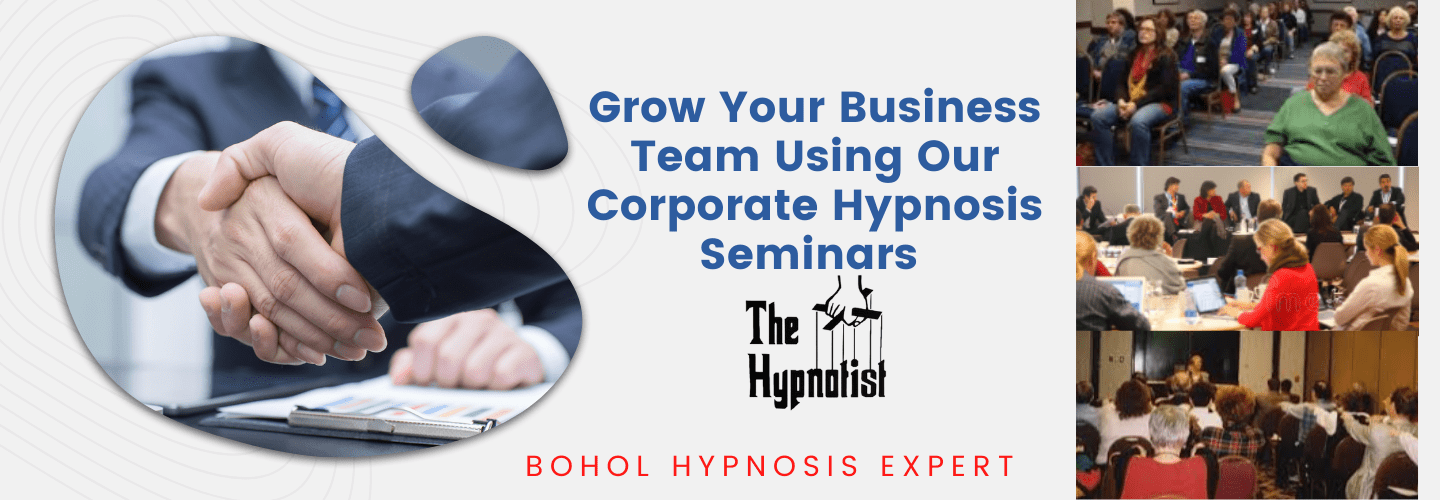
What Are the Top Fears or Phobias
The top phobias encompass a range of fears: acrophobia (fear of heights), agoraphobia (fear of open spaces), social phobia (fear of social interactions), and specific fears such as those of animals, insects, or enclosed spaces. These fears disrupt everyday life, invoke panic attacks, and can lead to social isolation.
I teach the word FEAR is an acronym for False Evidence Appearing Real. If you look back and meditate on your past fears, you realize that what you fear to happen seldom does. It is a previous trigger that your mind responds to. Asthma is also they type of fear, read how age regression will help the Asthmatic individual.
Yet, they’re not insurmountable. Understanding the trigger points and causes can help manage these phobias. Treatments involve a mix of emotional freedom technique, cognitive-behavioral therapy, hypnotherapy using age regression and medication as a last resort. Further exploration into each phobia provides a detailed insight for better management and potential resolution.
Understanding Phobias
 To fully understand the complexity of phobias, it is essential to recognize that they are not simply intense fears, but intricate anxiety disorders that can greatly influence an individual’s social interactions and daily life. These disorders encompass a broad spectrum, ranging from specific phobias such as fear of dogs or snakes, to social phobias including fear of humiliation or embarrassment.
To fully understand the complexity of phobias, it is essential to recognize that they are not simply intense fears, but intricate anxiety disorders that can greatly influence an individual’s social interactions and daily life. These disorders encompass a broad spectrum, ranging from specific phobias such as fear of dogs or snakes, to social phobias including fear of humiliation or embarrassment.
Phobias are characterized by intense fear, often leading to avoidance behavior. This behavior is an attempt to mitigate the anxiety associated with the phobia, but it can considerably disrupt normal life activities. For example, a person suffering from agoraphobia, a fear of open spaces, markets, or bridges, may experience panic attacks when confronted by these environments. In extreme cases, individuals may confine themselves to their homes to avoid the triggering situations altogether.
The symptoms of phobias go beyond mere fear. They can manifest physically as rapid heartbeat, sweating, and trembling, and can trigger overwhelming panic attacks. A person living with a phobia is faced with a constant struggle, forced to navigate their daily activities around their fears. This can lead to significant distress and impairment, further exacerbating their anxiety.
While the experience of a phobia is intensely personal, understanding that these are recognized anxiety disorders can bring some comfort. They are not simply irrational fears, but conditions that many people live with. Treatment options are available, including behavioral therapy, cognitive behavioral therapy, and medication. With understanding, empathy, and the right support, individuals can manage their phobias and lead fulfilling lives.
Causes and Triggers of Phobias
 Building on our understanding of phobias as complex anxiety disorders, it becomes essential to explore the causes and triggers that contribute to their development. The genesis of these fears is multifaceted, often involving a combination of biological, psychological, and environmental factors.
Building on our understanding of phobias as complex anxiety disorders, it becomes essential to explore the causes and triggers that contribute to their development. The genesis of these fears is multifaceted, often involving a combination of biological, psychological, and environmental factors.
Genetics, a biological factor, can predispose individuals to anxiety disorders, including phobias. Some people may have a higher inherited susceptibility to fear responses, which can manifest as a phobia when triggered by specific situations or objects.
Psychological elements like personality traits and cognitive biases also play a role. For instance, people with a tendency towards high levels of anxiety or those who are more sensitive to danger may be more prone to develop phobias. Similarly, cognitive biases such as an exaggerated perception of risk or harm can contribute to the onset and maintenance of phobias.
Environmental factors, particularly traumatic experiences, are potent triggers. A distressing event, such as a near-drowning incident, could lead to a lifelong phobia of water. This learned fear can be further reinforced by social factors like witnessing others’ fearful reactions.
Avoidance behaviors are common among individuals with phobias, as they often go to great lengths to avoid their fear triggers. Although this avoidance can provide short-term relief, it generally reinforces the phobia in the long term, creating a vicious cycle.
· Acrophobia: Fear of Heights
 What happens when a simple gaze downwards from a high balcony or a trip up a tall building triggers an overwhelming fear? This is the reality for those suffering from acrophobia, the fear of heights. Curiously, affecting over 6% of the population, this fear is much more than a simple discomfort; it is a powerful and sometimes debilitating phobia.
What happens when a simple gaze downwards from a high balcony or a trip up a tall building triggers an overwhelming fear? This is the reality for those suffering from acrophobia, the fear of heights. Curiously, affecting over 6% of the population, this fear is much more than a simple discomfort; it is a powerful and sometimes debilitating phobia.
Acrophobia can present itself in a variety of ways. The most common symptoms include trembling, sweating, and shortness of breath. In severe cases, individuals may experience panic attacks, a heart-pounding sense of dread that can be both physically and emotionally distressing. It’s not difficult to imagine how this fear could limit one’s experiences and overall quality of life.
This fear of heights is not without reason. Many researchers believe it to be an evolutionary adaptation, a primal response hardwired into our brains to protect us from the danger of high places. From an analytical perspective, this makes sense. Our ancestors who were cautious of heights were more likely to survive and pass on their genes.
Therapy, specifically cognitive behavioral therapy, has shown to be effective in managing acrophobia. By challenging and changing the thoughts that lead to fear, individuals can gradually learn to handle heights in a healthier way. Therapy is not a quick fix, but with patience and persistence, it can notably improve the lives of those living with this fear.
· Agoraphobia: Fear of Open Spaces
 Moving through open spaces, crowded markets, or standing in queues can trigger an overwhelming sense of fear in individuals suffering from agoraphobia, a complex anxiety disorder that often limits daily activities. This fear of open spaces is not merely a distaste for certain environments but an intense, debilitating fear that can lead to panic attacks.
Moving through open spaces, crowded markets, or standing in queues can trigger an overwhelming sense of fear in individuals suffering from agoraphobia, a complex anxiety disorder that often limits daily activities. This fear of open spaces is not merely a distaste for certain environments but an intense, debilitating fear that can lead to panic attacks.
Agoraphobia is a manifestation of anxiety that extends beyond mere discomfort. It can transform mundane tasks into insurmountable obstacles, leading to social isolation and a significant reduction in quality of life. Individuals faced with this condition may find themselves avoiding places or situations that could potentially induce panic, confining themselves in their comfort zone, often being their homes.
Understanding agoraphobia requires a deep appreciation of the individual’s perspective, recognizing the enormity this fear holds over their daily activities. It is a disorder that pivots on fear and avoidance, causing a cyclical pattern of anxiety and retreat that can prove challenging to break.
Analytically, agoraphobia is a complex interplay between psychological and physical responses. The fear-induced panic attacks are not merely psychological but can manifest physically through symptoms such as increased heart rate, shortness of breath, or even fainting.
From a pragmatic standpoint, treatment of agoraphobia involves a combination of cognitive behavioral therapy (CBT) and medication. This dual approach aims to help individuals manage their symptoms, confront and change their fear response, and ultimately regain control over their daily activities. The journey towards recovery can be arduous, but with appropriate professional help and personal determination, it is entirely achievable.
· Claustrophobia: Fear of Enclosed Spaces
 While agoraphobia manifests as a fear of open spaces, its mirror image in the domain of phobias is claustrophobia, the intense fear of enclosed spaces. As a common phobia, claustrophobia impacts approximately 5-7% of the population, affecting their daily activities and travel plans. This is not merely a discomfort or preference for wide, open spaces. It’s a deep-rooted fear that can trigger panic attacks, sweating, trembling, and a strong desire to escape the perceived confinement.
While agoraphobia manifests as a fear of open spaces, its mirror image in the domain of phobias is claustrophobia, the intense fear of enclosed spaces. As a common phobia, claustrophobia impacts approximately 5-7% of the population, affecting their daily activities and travel plans. This is not merely a discomfort or preference for wide, open spaces. It’s a deep-rooted fear that can trigger panic attacks, sweating, trembling, and a strong desire to escape the perceived confinement.
It’s important to understand that claustrophobia, like all phobias, is a manifestation of anxiety disorders. It’s a psychological response to a perceived threat, often linked to past traumatic experiences with enclosed spaces. The individual’s mind associates these spaces with danger, leading to heightened anxiety and fear responses when exposed to similar environments.
One key aspect of claustrophobia is its potential to disrupt daily life. The fear of enclosed spaces may limit an individual’s ability to use elevators, travel by airplane, or even be in crowded places. This can limit their freedom and mobility, and as a result, their quality of life.
However, it’s not all doom and gloom. Claustrophobia is treatable. Therapy, exposure techniques, and relaxation strategies are commonly used to manage this fear. Through gradual and controlled exposure to confined spaces, individuals can learn to manage their fear responses and eventually overcome their claustrophobia. It requires patience, understanding, and professional help, but with time and effort, people can regain control over their fears and lead more comfortable lives.
· Social Phobia: Fear of Social Interactions
 In the domain of anxiety disorders, social phobia, also known as social anxiety disorder, stands as a prevalent issue, affecting a significant number of individuals and drastically affecting their social interactions. This disorder is characterized by an intense fear of being scrutinized or judged negatively in social or performance situations. This fear can be so overwhelming that it interferes with daily activities and relationships, hindering an individual’s quality of life.
In the domain of anxiety disorders, social phobia, also known as social anxiety disorder, stands as a prevalent issue, affecting a significant number of individuals and drastically affecting their social interactions. This disorder is characterized by an intense fear of being scrutinized or judged negatively in social or performance situations. This fear can be so overwhelming that it interferes with daily activities and relationships, hindering an individual’s quality of life.
People with social phobia often find everyday interactions challenging. They may dread social events for weeks beforehand, worry excessively about embarrassing themselves, or feel intensely uncomfortable being watched. These fears can lead to avoidance of social situations, further isolating the individual and exacerbating their anxiety.
Social phobia is not merely shyness – it is a debilitating condition that can lead to significant distress and impairment. It’s important to understand that people with this disorder do not choose to be afraid; their fear is a response to a perceived threat that feels very real to them.
There is, however, cause for hope. Therapy, particularly cognitive behavioral therapy, has shown considerable success in treating social anxiety disorder. Through therapy, individuals can learn to challenge their fearful thoughts, improve their confidence, and develop coping strategies for social interactions. With patience, persistence, and professional help, individuals with social phobia can learn to navigate social situations more comfortably, reducing their fear and improving their quality of life.
· Specific Phobias: Animals, Insects, and More
 Delving into the domain of specific phobias, we encounter fears that are intensely focused on particular objects or situations such as animals, insects, driving, or heights, which can trigger significant anxiety and avoidance behaviors in individuals. Mainly, these phobias emerge from a complex interplay of genetic and environmental factors, often reinforced by traumatic experiences.
Delving into the domain of specific phobias, we encounter fears that are intensely focused on particular objects or situations such as animals, insects, driving, or heights, which can trigger significant anxiety and avoidance behaviors in individuals. Mainly, these phobias emerge from a complex interplay of genetic and environmental factors, often reinforced by traumatic experiences.
- Fear of animals: Zoophobia, as it’s scientifically called, is more common than one might think. From mild uneasiness to severe dread, this fear encompasses a wide spectrum and can be specifically directed towards a certain animal, such as dogs or snakes.
- Fear of insects: Known as entomophobia, this phobia can cause extreme discomfort and anxiety. Sufferers may go to great lengths to avoid environments where insects may be present, affecting their quality of life.
- Fear of snakes: Ophidiophobia, the fear of snakes, is one of the most commonly reported specific phobias. Even the mere thought or image of a snake can induce anxiety in individuals with this phobia.
- Fear of driving: Vehophobia, or the fear of driving, can be debilitating, restricting individuals’ ability to travel, and consequently affecting their professional and personal lives.
- Fear of high places: Acrophobia, fear of heights, can cause individuals to avoid certain places or activities, such as climbing stairs or riding in elevators.
Understanding these fears is the first step to addressing them. It’s important to note that phobias are common, and experiencing them does not signify weakness. In our next segment, ‘Treatment Options for Phobias’, we will explore the various therapeutic interventions available to help individuals overcome their fears.
Treatment Options for Phobias
 Having explored the nature and complexity of specific phobias, it becomes equally important to examine the various treatment options available to alleviate these debilitating fears. Phobias can severely impact an individual’s quality of life, justifying the necessity for effective interventions.
Having explored the nature and complexity of specific phobias, it becomes equally important to examine the various treatment options available to alleviate these debilitating fears. Phobias can severely impact an individual’s quality of life, justifying the necessity for effective interventions.
Emotional Freedom Technique (EFT) and cognitive behavioral therapy (CBT) are frontrunners in treatment options for phobias. Hypnotherapy using age regression can be used to find the root of a fear or phobia, We call that the ISI , initial sensitizing incident. Behavioral therapy seeks to change harmful behavior patterns, while CBT combines this approach with strategies to alter negative thought processes. The goal is not just to manage the symptoms, but to teach coping mechanisms that empower individuals to regain control of their lives.
Medications, including beta blockers, antidepressants, and tranquilizers, can also play a vital role in phobia treatment. These may help control physical reactions to anxiety, reducing discomfort, and making it easier for individuals to engage in therapy.
The awareness of one’s phobia and its triggers is a significant step towards healing. This self-knowledge allows individuals to seek appropriate help and engage effectively in their treatment.
Combining therapy with medication is a common approach in managing phobias, offering a more extensive and personalized treatment plan. This blend provides an empathetic, analytical, and all-encompassing approach, addressing both the symptoms and underlying causes of the phobia.
However, it is essential to remember that overcoming phobias may take time and patience. There is no one-size-fits-all treatment. Each journey is unique and may require different combinations of behavioral therapy, cognitive behavioral therapy, and medications. Seeking professional help is vital, as it can make the path to recovery less challenging and more achievable.
Take The First Step, Make An Appointment

Do not be afraid to reach out to me, Mark E Wilkins, to assist you in any issues you might have. Most Hypnotherapy sessions last 2 hours and EFT Sessions are usually handled with one session. Life Coaching is 45 minute session, once a week. Self-Hypnosis is taught in one session, and lasts a lifetime.
To make an appointment, first listen to the Pre-talk and fill out he Complementary Healthcare Provider Disclosure. The use the Contact Form to request an appointment with the Bohol Hypnosis Expert.
Self-help downloads are available. The self-hypnosis program to teach you how to self-hypnotize is here.
Frequently Asked Questions
What Is the #1 Phobia?
The most prevalent phobia worldwide is Arachnophobia, which is the intense fear of spiders. This phobia can trigger severe anxiety and fear, affecting a significant portion of the population. It is often linked to evolutionary responses against potentially harmful creatures.
Symptoms can appear in childhood and persist into adulthood. Therapeutic interventions, such as cognitive behavioral therapy, can be highly effective in managing and overcoming this fear.
What Are the Rarest Phobias?
The 10 rarest phobias encompass a broad spectrum of fears. These include: – Genuphobia, the fear of knees; – Xanthophobia, the fear of the color yellow; – Aulophobia, the fear of flutes; – Pogonophobia, the fear of beards; – Nomophobia, the fear of being without a mobile phone.
Additionally, Hippopotomonstrosesquippedaliophobia, the fear of long words; Chrometophobia, the fear of money; and Ephebiphobia, the fear of youth, also make the list.
Despite their rarity, these phobias significantly impact individuals’ daily lives.
What Is the Hardest Phobia to Treat?
Among various phobias, agoraphobia is often considered the most challenging to treat. This complex phobia, characterized by fear of open or crowded spaces, can drastically limit an individual’s ability to lead a normal life.
Its treatment may involve a combination of therapy, medication, and gradual exposure to anxiety-inducing situations. Professional intervention is essential, as untreated agoraphobia can greatly impair a person’s mental well-being and quality of life.
What Scares People the Most?
 People’s fears vary greatly and are influenced by personal experiences, environment, and individual predispositions. However, some common fears include heights (acrophobia), spiders (arachnophobia), and social interactions (social phobia).
People’s fears vary greatly and are influenced by personal experiences, environment, and individual predispositions. However, some common fears include heights (acrophobia), spiders (arachnophobia), and social interactions (social phobia).
Other prevalent fears are snakes (ophidiophobia), flying (aerophobia), and open spaces (agoraphobia). Understanding these fears is important as they can have a major impact on an individual’s daily life.
Treatments such as cognitive-behavioral therapy and medication can help manage these fears.
Conclusion
To sum up, phobias, a widespread psychological phenomenon, manifest in various forms ranging from specific fears such as zoophobia to broad social anxieties. The seriousness of these fears can greatly impact the quality of life, leading to avoidance behaviors and mental distress.
Read more about Fear and Phobias at this post.
Fortunately, effective treatment strategies, including behavioral therapy and pharmacological interventions, offer hope for individuals grappling with these debilitating fears. A deeper understanding of these phobias paves the way for empathy, awareness, and ultimately, improved mental health outcomes.





